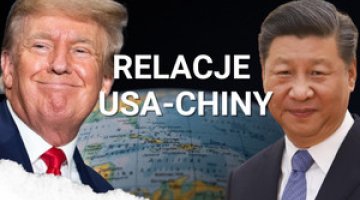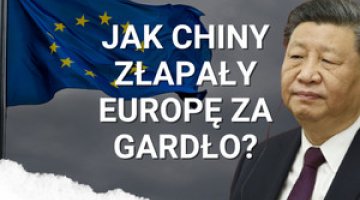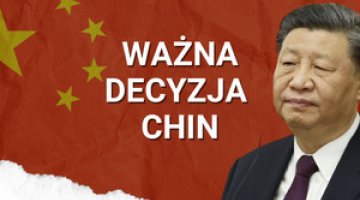Fourth Plenum of the Central Committee of the 20th National Congress of the Chinese Communist Party: major purges in the military and within the party
Between 20 and 23 October, the Fourth Plenary Session (Fourth Plenum) of the Central Committee (CC) of the 20th National Congress of the Chinese Communist Party (CCP) took place. During the meeting, the composition of the CC and its bodies, including the Central Military Commission (CMC), was supplemented. According to the information made public, the session was devoted primarily to outlining the main principles of the Five-Year Plan for the Economic and Social Development of the People’s Republic of China for 2026–2030 (the 15th Five-Year Plan). Formally, the plan will be adopted in March 2026 by the PRC’s façade parliament, the National People’s Congress.
The changes to the composition of the CC and the CMC, as well as the way they were executed, demonstrate an unprecedented scale of purges within the People’s Liberation Army (PLA) and the party apparatus – the largest since the death of Mao Zedong in 1976. During the Plenum, the general outlines of the 15th Five-Year Plan were also presented, indicating the continuation of China’s current industrial policy, which leads to overproduction and is likely to perpetuate tensions in the PRC’s trade relations with developed countries.
Commentary
- The communiqué from the session revealed previously unknown details concerning the scale of the purges within the military and the party apparatus, which are comparable only to those of the Maoist era. The Fourth Plenum was attended by 168 of the 205 full members and 147 of the 171 alternate members of the CC. Of the 61 absentees, one had died of natural causes, while ten were officially expelled from the CCP. The fate of the remaining members remains unknown. The most extensive purge took place within the military. Of the 33 generals serving on the Committee, 22 failed to attend the session – eight have so far been expelled from the army, while the fate of the remaining fourteen remains unclear. Despite the established practice of filling CC vacancies according to the order of alternates on the list, all PLA officers were bypassed in this process. The only promotion among military personnel was the appointment of General Zhang Shengmin, head of the CMC Commission for Discipline Inspection, as Vice-Chairman of the CMC. He has spent most of his career serving as a political officer at various levels.
- The causes and mechanisms of the military purge remain unclear. It may have been initiated by Xi Jinping as part of his campaign to combat incompetence within the officer corps – while simultaneously removing individuals suspected of disloyalty – but it could also reflect an intense, though organic, factional struggle within the upper echelons of the armed forces. It should be noted that the first major purge in the PLA under Xi’s leadership occurred in 2015, enabling him to consolidate full control over the military. Current developments suggest that structures loyal to him are eliminating individuals whom he himself had previously appointed. Thus, it cannot be ruled out that the true motivation is to enhance, in the long term, the effectiveness of the party’s armed wing. From the mid-1980s until the 2015 reform, most appointments within the PLA were made through a process deeply affected by corruption. Consequently, within today’s officer corps, only the lowest ranks were promoted based on merit. Therefore, following the 2015 purge, Xi’s main challenge became not disloyalty among generals, but rather their incompetence. Regardless of the underlying causes of the current purge, the chairman’s position appears unshaken, and he continues to serve as the ultimate arbiter in factional rivalries – both within the military and the party apparatus.
- The unveiled assumptions of the 15th Five-Year Plan indicate a continuation of China’s existing economic policy. The principal objectives are economic security, industrial modernisation, and self-sufficiency, while demand-side growth is once again relegated to the background. As with the 14th Five-Year Plan, the new framework does not specify a concrete target for overall economic growth. It does, however, reaffirm the long-term goal of raising GDP per capita to the level of a ‘moderately developed country’ by 2035 – a target that would require an average annual growth rate of approximately 4.7% over the next decade. The plan identifies the construction of a modern industrial system as a top priority, replacing scientific and technological self-sufficiency – which held first place in the 14th plan – as the leading goal (the two priorities have effectively swapped positions). Stimulating domestic demand remains formally designated as the third pillar of the plan. In this context, the communiqué introduced a new slogan calling for the ‘close integration of efforts to improve living standards and boost consumption alongside investment in physical assets and human capital’. Yet these proposals to strengthen the demand side have remained unimplemented for many years and continue to contradict the first two priorities, which are geared towards further expanding supply. The continued emphasis on scientific and technological development also reflects a broader objective: the expansion of ‘new, high-quality productive forces’ – a political catchphrase in recent years. This concept seeks to integrate technology, talent, and capital into a single framework to drive sustainable growth amid external constraints, such as US-imposed technological restrictions and rising trade barriers worldwide.
- The assumptions underpinning the 15th Five-Year Plan indicate that China’s industrial pressure on its trading partners will not ease but instead intensify. The European industrial sector will be particularly vulnerable owing to the lack of consensus among EU member states on a coherent – and, above all, effective – policy of industrial protection. In practice, the new plan entails a strengthening of the PRC’s policy of using technology to modernise industry, with the objective of increasing productivity rather than merely expanding output, while simultaneously limiting efforts to stimulate domestic demand. This approach implies the continued extension of deflationary pressures in China and the maintenance of exports as the principal driving force of its economy.





